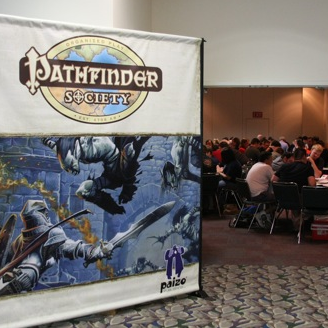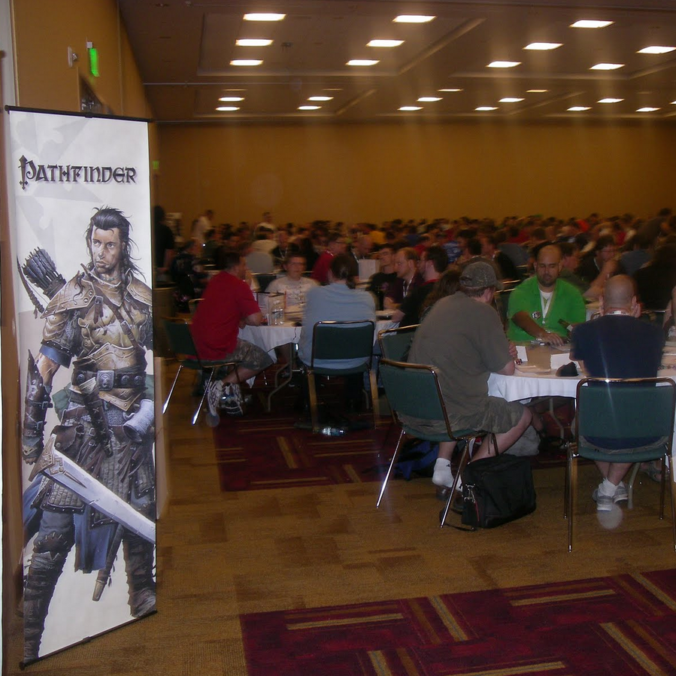As a follow-up to GM Checklist for Pathfinder Convention Games, here are additional tips.
In your game announcements, consider these rules:
Tell players to show up 15 minutes before the game if they have new (non-pregen) characters so you can review the characters and check the math. If you show up just as the game begins, expect to play a pregen which the GM will provide.
Announce a break schedule before the game begins and in your game announcement — one 10 minute break around the midpoint of the game often works well. 4 hours is a long time to sit at a table, and players will often simply walk off to take a break if you don’t give them one and they don’t know one is coming up.
No cell phones allowed at the table during game play — restrict checking Facebook, texting, or taking calls to the breaks.
Other ideas include:
Initiative cards with blanks for Player name, character name, Character Faction, Init bonus (and 4 rolls), Perception bonus, Sense Motive bonus, and six d20 random rolls from the players. This can speed up play and helps you remember the player/character names.
Alternatively, have tent-style name plates with both character name and player name to pass out.
Create “feat sheets”. Take the feats you’re not familiar with and write them out interspersed throughout the scenario when needed so that I have the information at hand.
Use wet wipes for hand-drawn wet-erase map mats. Also include some paper towels. Alternatively, keep a small spray bottle containing water with you. The perfect one for this application is the small spray bottle for cleaning eye-glasses.
Bring a sheet of new Pathfinder Society player numbers to pass out to any new players.








Recent Comments